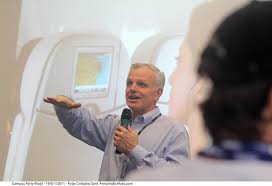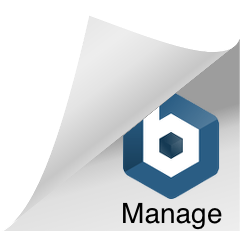From a very young age, I knew I was different than most people around me. I found it difficult to pay attention to things, and even more difficult to turn away from things that were interesting to me. My mother has shared that as a young child of 4, my younger brother of 3 found it incredibly frustrating to try and get my attention if I was working on a puzzle or some toy that involved problem-solving. He would prod, poke, scream in my face, push, tickle, and eventually bite me to try and break the trance I was under with my intriguing toy.
My mother says that not even biting would sway my attention – and my younger brother would eventually give up and move on. I now know this to be called hyperfocus, a symptom of ADHD or Attention Deficit Hyperactivity Disorder. ADHD comes in a couple of different flavors and I am lucky enough to have the inattentive type, in which a child or adult tends to ‘space out’ and ‘over’ focus – also known as hyperfocus.
During a hyperfocus event, trying to pull away or ‘shift’ focus from something very stimulating to you can be like trying to pull a strong magnet off of a slab of metal. During hyperfocus, it does not matter what the ‘other’ thing is that needs our attention – it could be the mere fact that we will be late to a doctor’s appointment if we don’t stop working on a computer or browsing Facebook. It could be a spouse calling you to dinner. It could be an alarm going off. It could be just about anything. In any case, your brain is demanding you remain focused on the stimulating thing vs. breaking away to the less stimulating thing. It can be heartbreaking when that less stimulating thing (according to your brain) is a loved one.
Hyperfocus is one of many reasons I felt compelled to build something, anything that would help me function better in society and minimize the negative consequences that were all too prominent in my life. You see, ADHD symptoms have been at the root of my losing my job, destroying my marriage and eradicating relationships. ADHD symptoms are merciless and unfortunately for me – never turn off. Medication for me can slightly mask some symptoms but by no means does it give me relief.
Luckily for me, problem-solving is one of my most stimulating activities. As a young teen, I would eventually become exposed to some of the very first computers created for personal use and I was hooked. Wow – a small machine that I could ‘teach’ how to solve problems. 35 years later, we are in a technological boom of problem-solving with artificial intelligence and machine learning. My interest in problem solving and computing has persisted into my adult years and has yielded a career as a skilled programmer and software developer for nearly 19 years.
Unfortunately, my ADHD symptoms have also persisted and have created an undercurrent of difficulties in my adult life. There are dramatic effects on my memory, executive function and ability to focus attention. In 2013, after a series of unfortunate events related to ADHD symptoms, my anger and frustration inspired me to solve this problem once and for all.
As a single parent, I was determined to find a way to fight back against the circumstances that seemed all too common in dealing with ADHD symptoms: Forgotten appointments, forgotten conversations, overdue bills and late payments, and general difficulty in organizing tasks. I would build a simple ‘assistant’ at first in 2013 to verbally remind me of items on my calendar. It worked well – and it helped me to hear a pleasing and reassuring voice that gave me the ‘nudge’ I needed to get up and go.
Over time, while working on other projects – people would hear this voice in coffee shops and ask where they could get something like this. This convinced me to create something for the general public. Over the next year in my spare time, I would build a solution to help solve my daily challenges.
In 2014 I would create and launch a mobile app and watch under the name of ‘Kai Says’. A year later, I would create a prototype of a home device code named ‘Memo’ where Kai could communicate with its user. As my knowledge progressed, I would discover many more opportunities that existed where Kai could assist me with my special mental ‘wiring’. In 2016, a new company was founded to officially explore the challenges people face while living with neurological disorders. At the same time, we would develop technologies to help normalize the lives of persons who are ‘wired’ differently than others. Our ultimate aim is to give persons with neurological disabilities a chance to work among others with confidence and peace of mind.
Kai is now KnowPal, a robust digital assistant platform that is focused on time, task and event management for all people, but, in particular, with features designed to help persons with special needs in neurological function. KnowPal is my passion project to help bring normalcy to my life as well as the lives of persons around the world who are not ‘wired’ as most persons are wired – Those that can truly benefit from the help of another, an assistant, a caretaker – a digital companion known as KnowPal.
I created KnowPal and continue to lead the effort to add improvements to the app with a vision finding relief from negative consequences of living with ADHD and changing my life and millions of other lives for the better. Being on time for appointments, keeping track of tasks I need to do (even if I don’t want to do them) and knowing when it is time to shift and focus on other things are among my ambitions with my new digital companion.
The mission of KnowPal is to allow anyone to experience productivity and peace of mind. There is no cure for ADHD, but my sleeves are rolled up to direct my daily frustrations and challenges into excellence in innovation. We will build a platform that engages its user to help them stay one step ahead and help to keep them from falling behind in the rigors of life.
KnowPal is free of charge, with premium plans available for advanced features to enhance your productivity. I encourage readers to join our community as a KnowPal user and help us to understand how KnowPal can provide an exceptional level of assistive technology to enhance productivity and help to provide peace of mind.
Thank you for using KnowPal.
– Steve





About The Author: Steve McDonald
More posts by Steve McDonald